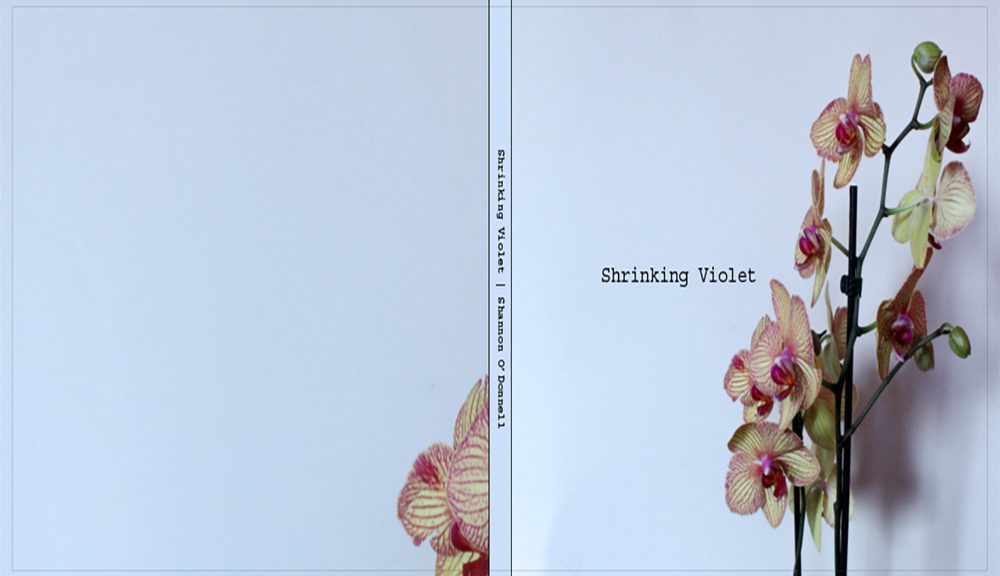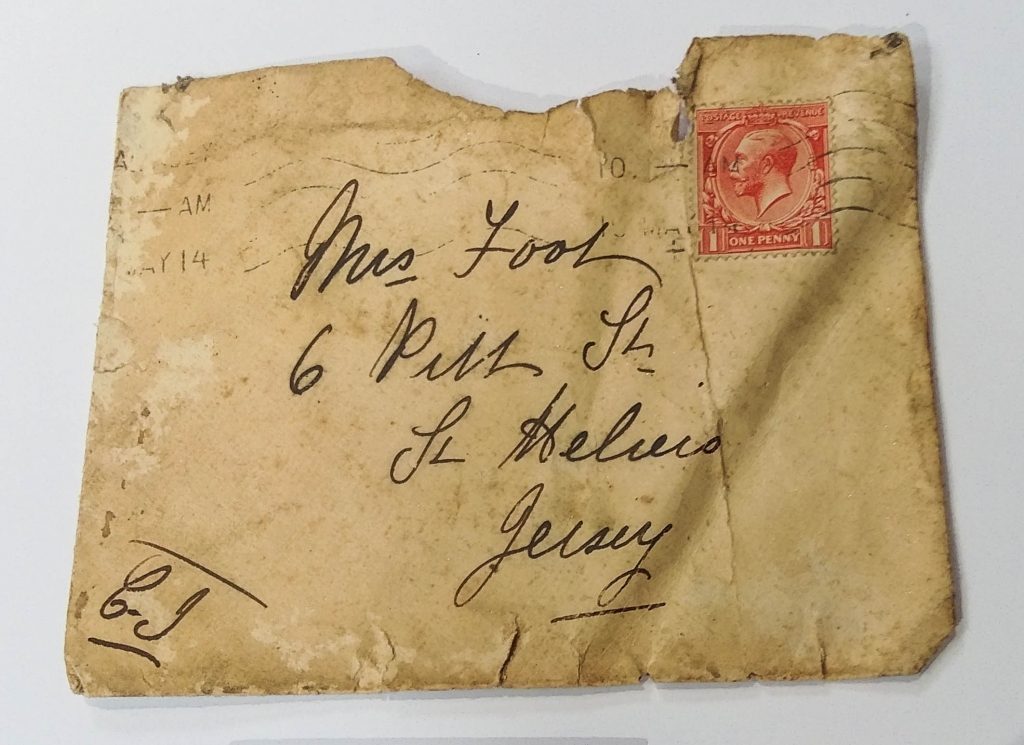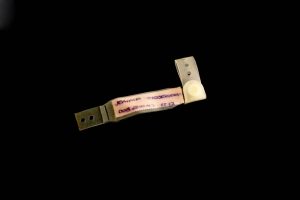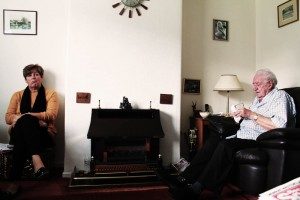Here are examples of excellent Personal Studies from last couple of years from students very personal and mature subjects.
Jasmin Ross: Handle With Care
I have made a book which is called Handle With Care, it is about the history of St Saviours hospital from when it first opened in 1869 to when it closed. The layout of the book starts from the outside, goes inside then, then you meet 3 patients, it stays inside then it goes outside again to finish the book. My book is 108 pages and it has a combination of text, double page spreads and single image pages. My book is split into two parts of Archival material which was the basis of my work which i went a collected and photographed then next part is of my own images which i made of the outside of the abandoned building.
Read more here on her BLOG


Rosanna Armstrong: His Master’s Voice
Overall I have found my personal study project very interesting. Assisting with the wider project in collaboration with the Société Jersiaise Photographic Archive and National Trust has meant that I have been involved with research and discoveries as well as having access to exciting photographic opportunities. I was originally introduced to the collection of Francis Foot’s photographs in October last year while interring at the SJ Photographic Archive and since then have been involved in a lot of work developing a project around it in connection to the building restorations. I started by researching the family and history of the buildings and familiarising myself with the collection by updating the database. One of the most interesting areas of my project was actually visiting the buildings while they were in the process of being restored. This allowed me to connect the knowledge of the past to the present and explore the idea of preserving built heritage in connection to the historical photographic aspect. This relates to my interest in local history and the development of photography as an art form. Having knowledge of the past inhabitants reflects the human side of buildings and memories and traces associated with them. Some of the small details such as the image found behind the mirror and writing on the walls were particularly striking examples of this. It has also been interesting to explore family portraiture throughout time and conduct various shoots with my own family including one specifically connected to the Foot Shops.
Read more here on her BLOG

Link to her book: His Master’s Voice
Nina Powell: Jersey Folklore
Beliefs and superstitions revolving around mythical characters in Jersey, Channel Island are common. The ancient lanes overhung with vegetation look almost like dark tunnels leading into the unknown. Unexplained ruins dotted around the coast add to the air of mystery and Island people with a long and proud history have many stories to tell which have been passed down from generation to generation. In this photo book I have explored three of Jerseys most famous and well-known legends, portraying each one with a series of environmental portraits, studio shots and landscape photographs. The first legend tells the story of the poor Bride of Waterworks Valley, the second shows the demonic presence down at Devil’s Hole and the third looks into the many tales of Witchcraft in Jersey. This project is my response to the provided themes of ‘truth, fantasy and fiction’, as well as the beautiful depictions of myths created by other photographers. My aim for this photo book was to recreate some of our islands most interesting history using beautiful and insightful visuals. By doing this I hope to bring these legends back to life in this colourful yet ominous series.
Read more here on her BLOG

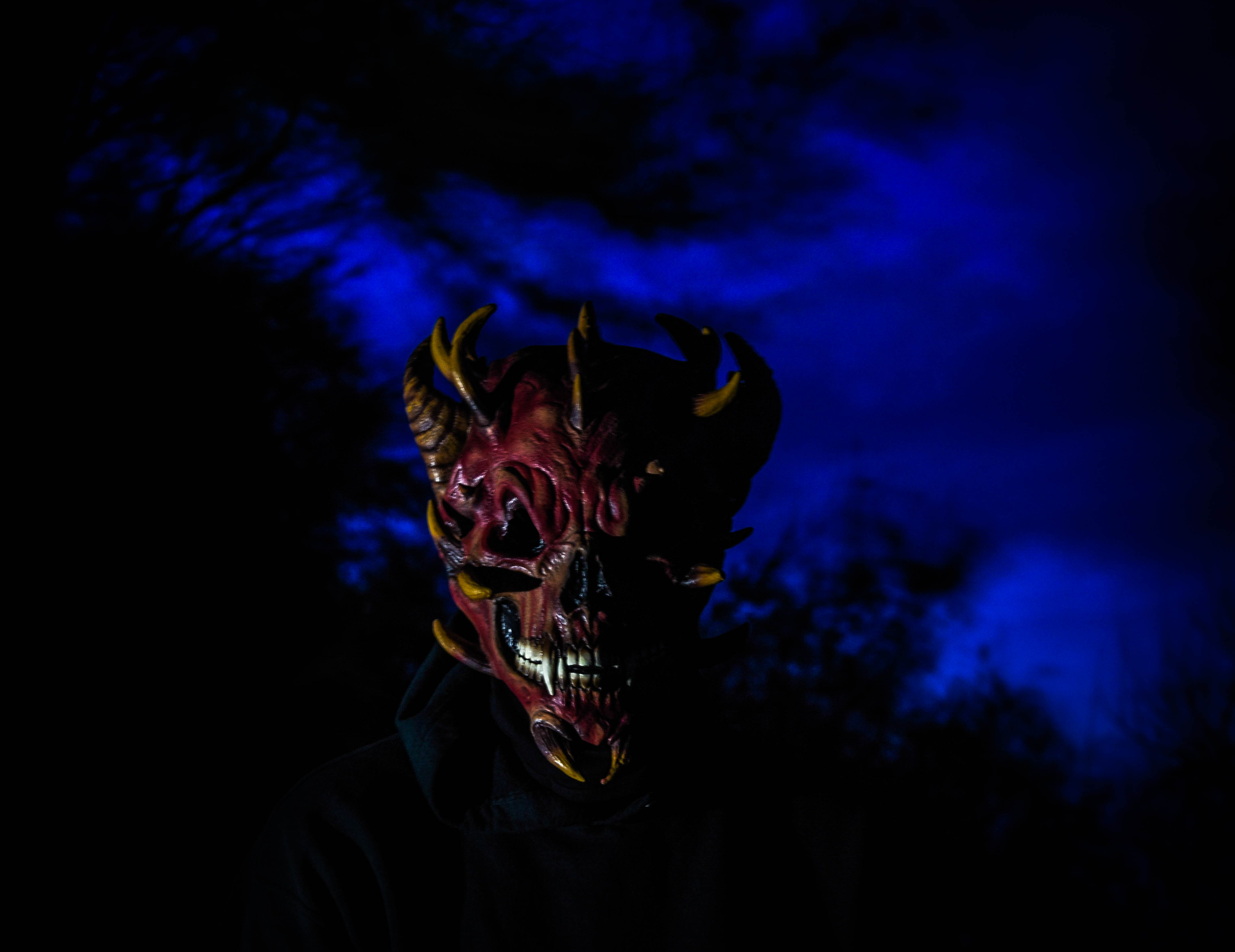
Link to her book: Jersey Folklore
Cerian Mason: Untitled
I produce a large amount of documentary style images revolving around the more shadowed teenage social life. This involves being in a lot of places we shouldn’t be, drinking too much and probably a little more nudity that this blog is ready for. Below is a selection of my project work over the last few weeks presenting a range of locations – from abandoned hotels to out of hours nightclubs – featuring my friends being strange and causing trouble. There are some clear trends in the image I create such as the selective palettes and tight range of colours and the positioning of characters – these images were not directed at all though the figures were of course aware I was photographing them. This photobook was made using bookwright software and will be printed as a portrait A4 project. Many of the design ideas for this projects are inspired from artists and graphic designers I have studied over the last two years such as Lotta Nieminen. Studying the graphic designer’s personal projects. I took particular notice of the image layouts and use of overlapping text. There is a carefully controlled colour palette and minimalistic design which aids the presentation of images in such a publication. Benjamin Koh’s project work again has a strong graphic theme which uses a muted colour palette to emphasize the continued sense of photographic narrative. His pages tend to be uncluttered and minimal which draws attention to the graphic images in each of the carefully constructed double-page spreads. These elements were crucial to my own work, ensuring that images would be easily visible and clearly presented.
Read more here on her BLOG


Link to her book: Untitled
Max Hillman: The Getaway
There is a consistency of monochrome tones and grainy, heavy contrasted images. Throughout my project I have looked at documentary photographers such as Larry Clark and Jacob Sobol, and upon reviewing their work i have grown a love for their styles. The layout and the order of the images is important as the book needs to flow, almost the same way a story does. I need to find similar groups of images and order them carefully one by one so the book feels as if it has a narrative. I started with a small, shadow filled image of my face as the book is about my teenage life with friends. I followed this by a double sided silhouette of a friend in the school car park leaning up against a car. I wanted to start the book of with images based around friends and our utilisation of cars. These next pages were organised to follow the theme around cars, starting with another image of friends in the school car park between lessons, leading to images in cars at night time.
Read more here on his BLOG



Link to his book: The Getaway
Gio Rios: Home Sweet Home?
In terms of my title, I called my book ‘home sweet home?’. This is of course a common household saying, that I have added a question mark to. Due to the fact that my home life is fairly broken and has been on and off my entire life, which makes it far from ‘sweet’. On the first page within my book I write the quote ‘family means no one gets left behind or forgotten’. This is controversial from the start, as my farther had done exactly this from my birth, which is ultimately what stems my thoughts and feelings towards a lot of my family life and the reasons for the decisions made within this book.
Read more here on his BLOG

Here I feature a stand alone image of an ultrasound of me. This is used to imply that I am the center of this book and that this is my own representation. The inclusion of juxtaposing images, put alongside one another, help to emphasise my emotions towards certain characters within my book.

My granddad is someone who has consistently been in and out of my life, throughout my upbringing. Therefore I feature him alongside a set of spiraling stairs to imply that he has spiraled out of my life.

Link to his book: Home Sweet Home?
Rochelle Merhet: Ryan
The first step I took to my project inspired by the work of the artists I have studied and discussed was look at my own archived family photographs. I have a huge selection taken by my parents featuring me and my brother, many appeared very informal depicting me and my brother playing and laughing at each other, which gave the ability to see the relationship between me and my brother and how it has developed. Much like any family album, these photographs share a very personal importance to me. I wanted to use photographs that depicted who I was as well as my brother in my book as a way of a candid reflection of what my childhood was like and how I felt about it. Similar to the work of Carolle Benitah I wanted to make physical alterations to the photographs to further explore the notion of nostalgia, memories and the relationships between family members, in particular between me and my brother. I wanted use their project as a way to further understand myself through the use of memories and photographs to build and develop and understanding of who me and my brother are today and in particular our differences which are created from the notion of ‘nature and nurture’.
Read more here on her BLOG




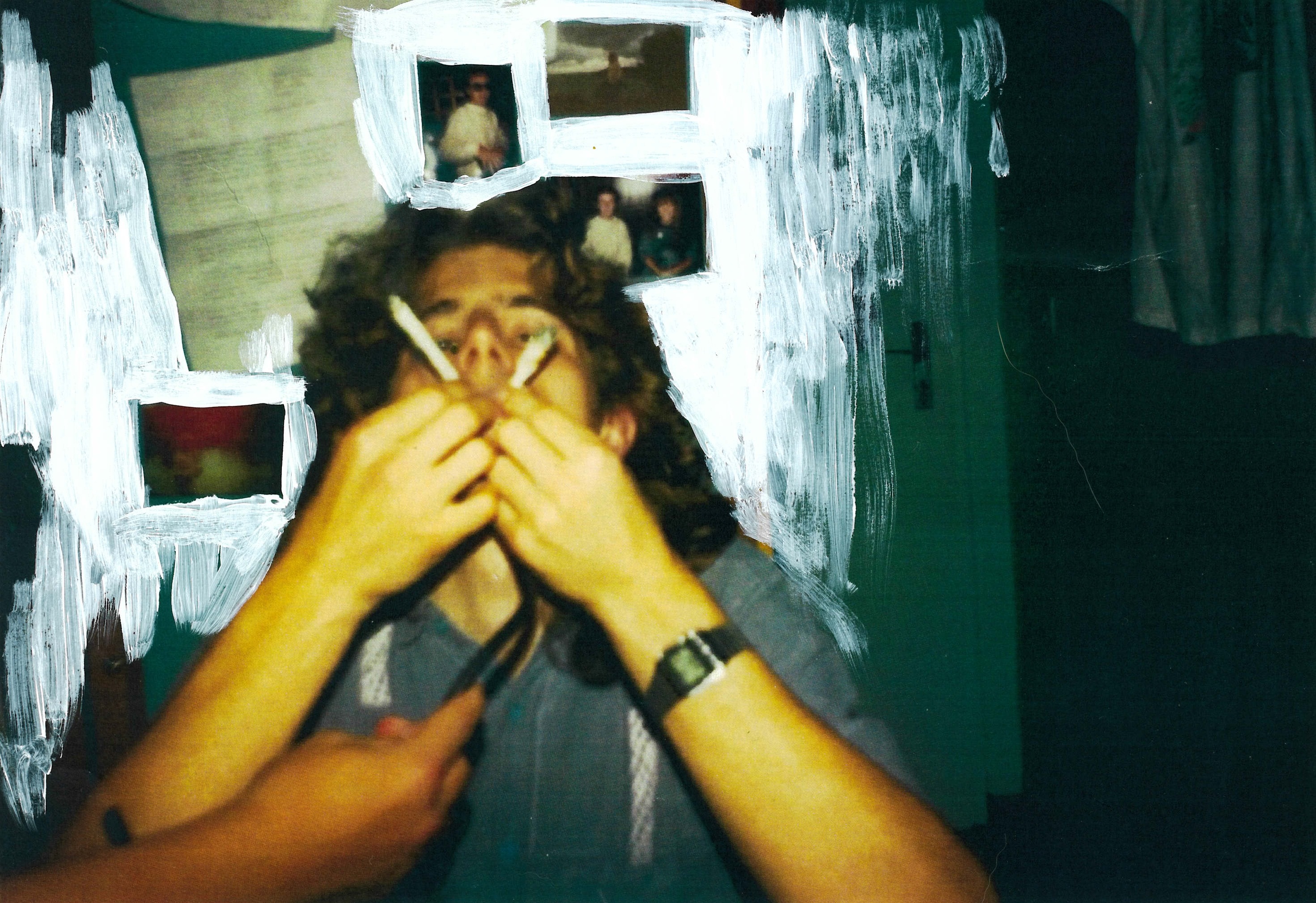

Link to her book: Ryan
Matthew Knapman: Is that My Blue Butterfly?
The research of both these artists informed and influenced my personal project, which focused on the life of my mother who is currently diagnosed with metastatic breast cancer. She was originally diagnosed with breast cancer in Easter 2014, but when the cancer has spread to other parts of the body, it is called metastatic cancer. The liver, lungs, lymph nodes, and bones are common areas of spread of metastasis. Using art and physical materials, I wanted to draw into and edit the photographs I take in order to illustrate my emotions and what my mother is going through. The physical art would be a visual guide to the audience, telling a story regarding the illness. This is something that I was excited to do, given my passion and abilities in art and design. I can draw, scratch or edit the photograph using chemicals and other kinds of destructive methods. This can demonstrate some kind of investigation into the relationship between traditional art and Photography as mediums. This is something that I touched upon for my AS project.
Read more here on his BLOG







Link to his book: Is That My Blue Butterfly?
Christianna Knight: Women of Yesterday
During my personal study I enjoyed having freedom to explore my own ideas and take inspiration from artists and photographers that I am interested in. I was very inspired by Cindy Sherman’s work, I wanted to explore themes such as masquerade, costumes and stereotypes which are very present in Sherman’s studio portraits. When first collecting ideas as to what I should base my project on I decided I wanted to explore female stereotypes through costume and studio portraits. However, with so many stereotypes existing within my gender I decided to create a series of portraits depicting stereotypes from each decade of the 20th Century. As I was born in 1998, I was looking at these stereotypes with a retrospective. I also kept feminist theory in mind, relating my stereotypes to important movements in feminist history including the three main waves as well as smaller social victories for women. I felt that this project was very successful and that each decade was well planned and executed and that the nine image work well as a series.

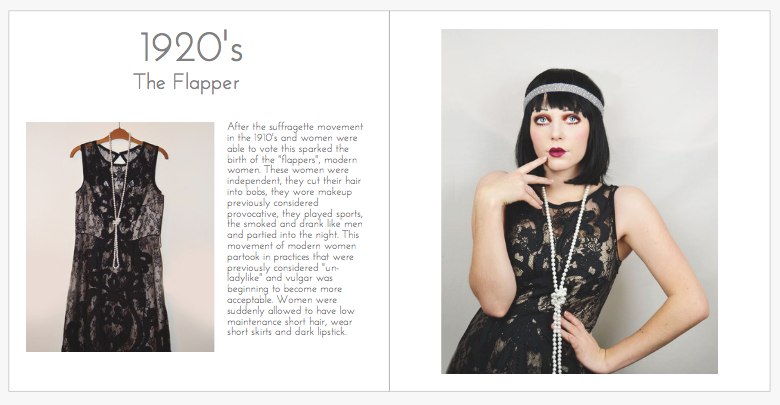



Read more here on her BLOG
Max Le Feuvre: Untitled
My photo-book is based around my Grandfather. He died 30 years ago and so I never got the chance to meet him. I wanted therefore to find out more about him and develop an understanding of what he may have been like if I had got to know him. This project was therefore very much about exploring and investigating the theme of absence, a story based around someone who is no directly part of it. I photographed off and on for 9 months to create this project, re-tracing my Grandfather’s steps and using photography to express my findings. Archival resources in particular have played a huge part in my project, especially through the access I have had from the Société Jersiaise Photographic Archives, and the resources I have found play as much a part in this story as does my own responses. I wanted to make my images and narrative feel as simplistic and personal as possible and so I constructed my photo-book by hand, I style I believe gives my work a quirky, old-fashioned feel.
Read more here on his blog:
https://hautlieucreative.co.uk/photo16a2/author/mlefeuvre05/
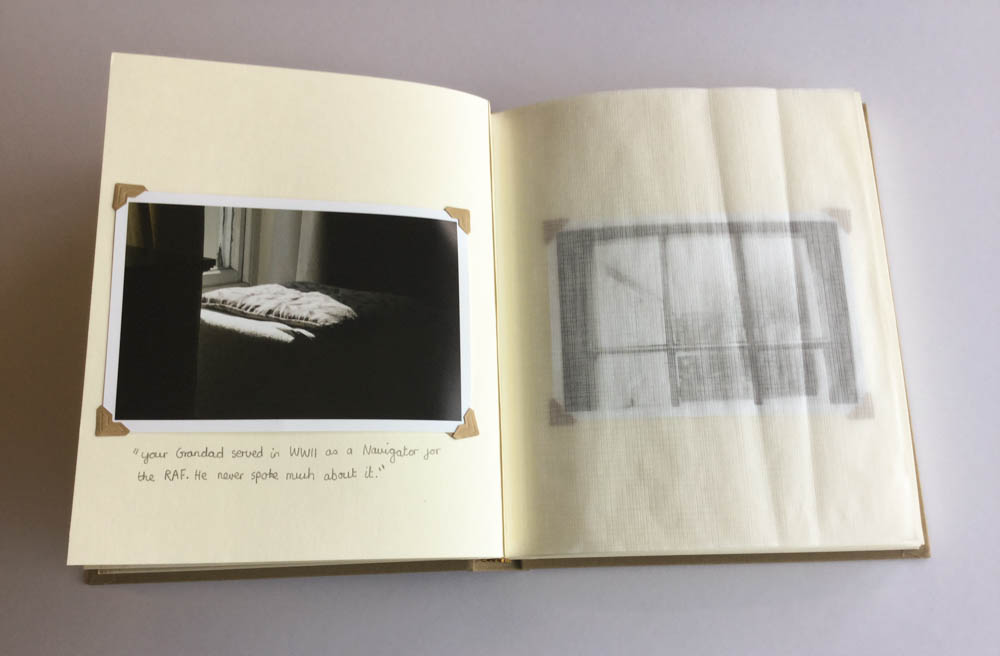
Shannon O’Donnell: Shrinking Violet
Shrinking Violet stemmed from a short film that I created as part of my project of my mother. I made a film based around an interview that I did with my mum and made it up of archival images as well as documenting her everyday life. Part of the interview sparked my interest when she said ‘I’m not one of those shrinking violets in the work place’. This caught my attention as I see her role as simply doing what is expected of her, something that I want to challenge through my photographic work. This brought on the idea for creating a parody shoot where I dress as a persona, similar to my mum, and pose around the house mimicking the role I see my mum portray. I wanted this photo book to embody the traditional role of women our society perceives and for spectators to view the images I have created to recognise themselves, their mothers, their sisters and their wives. Gender defines everyone and, at times, can be limiting. It makes us feel that we need to belong and conform to the expectations placed on us at birth solely on whether we were born male or female.
Explore research, ideas, experimentation on the her blog:
https://hautlieucreative.co.uk/photo16a2/author/sodonnell05/

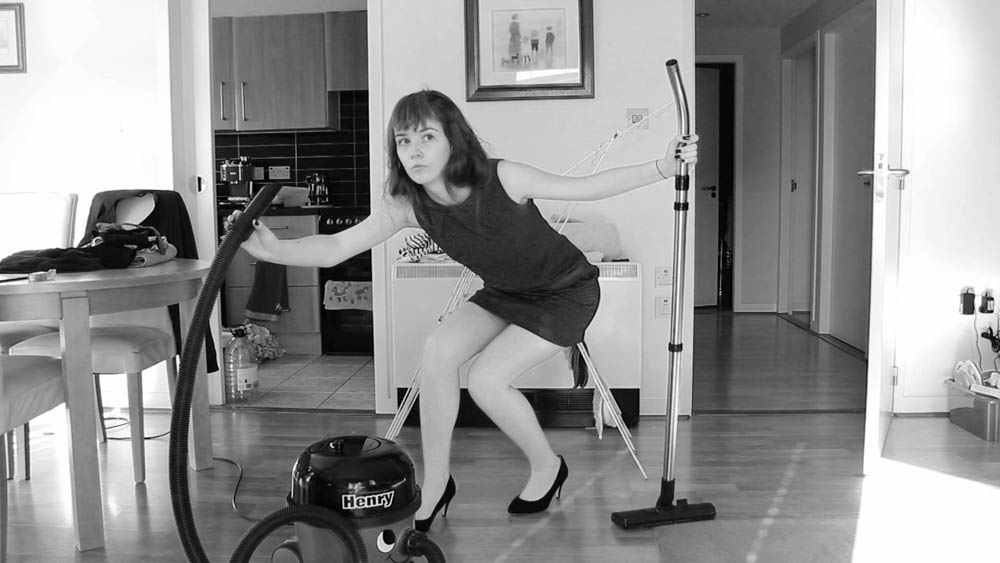
Watch her film below about feminism, her mother and her role in the family. This film was the starting point for her photographs above by re-staging herself as a domisticated female
link to her photo book: Shrinking Violet

Jemma Hosegood: The Memory Box
“Good friends make you face the truth about yourself and you do the same for them, as painful, or as pleasurable, as the truth may be.” – Corinne Day
An autobiography is an account of the life of a person written by that person. In other words, it is the story that a person wrote about themselves. My inspiration for this study came from memories that are forgotten, and the ‘things’ that re-jog our brains to remember them. These could be objects from a childhood collection box or a set of images from a blurry holiday. For this piece of work I attempted to join two ways of memory revival into a book as well as a layout presenting some of my final images.
Read her blog:
https://hautlieucreative.co.uk/photo16a2/author/jhosegood05/

Link to her photo book: Memory Box
Hayli Ducker: My Bones Hurt
I took huge inspiration from photographers such as Thilde Jensen, Jo Spence and Francesca Woodman, these three photographers all explored their illnesses through photography which I thought would help me come to accept my diagnosis. As Jo Spence explained, photography can be used as therapy, “literally using photography to heal ourselves.” Through taking these photographs to document my illness like a diary I came to terms with it and learnt to adapt and slowly started to be able to have a normal life again just at a slower pace than before. For me this was a difficult subject matter to explore as I try and keep it rather private, friends know about it but I try to keep it private from classmates and the general public. I don’t want people to look at me differently and I found I felt rather vulnerable exposing the one thing I do my best to hide.
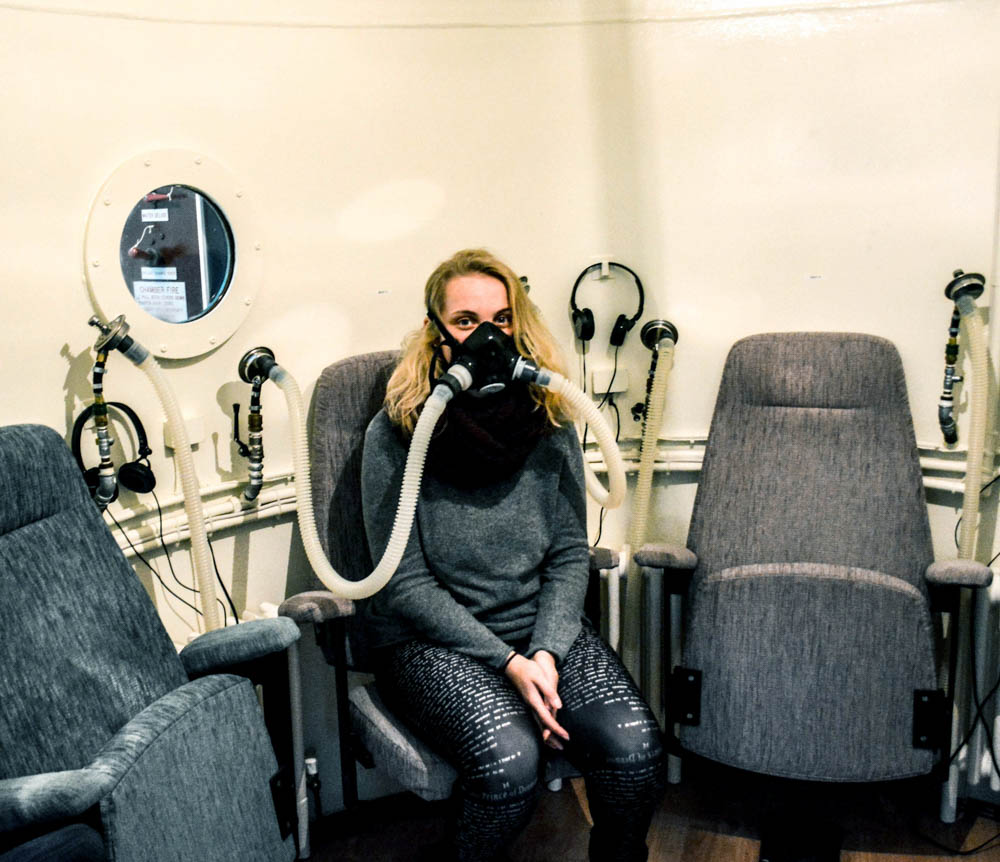
Link to her blog:
https://hautlieucreative.co.uk/photo16a2/author/ckeene05/
Jessica Freire: Domestic
My personal study is about my mother who immigrated to Jersey in 1987, from a disadvantaged background in the hopes of having a better life. My mother is the eldest child of six, who grow up in a village called Machico on the south east side of the Island of Madeira. After leaving school at the age of 9 to work on the land to provide for her family, she developed a hard working discipline. Currently, she is the breadwinner within my family working in five different jobs all within the domestic area. In my personal study I am exploring how my mum’s role as a breadwinner abdicates from her culture and stereotypical role within a household.
Link to her book Domestic

Explore research, ideas, experimentation on the her blog:
https://hautlieucreative.co.uk/photo16a2/author/jfreire05/
Sian Cumming: The Butler
As a photographer, it is important for me to express details about my life to almost create a biography through photographs. I chose to use my dad for my project as his job has impacted my life since day 1. My dad is the Butler for the Lieutenant Governor of Jersey and has enabled me to have an insight into the life of royalty. My dad’s responsibilities are; ensuring the house events run smoothly, he also manages the house staff and liaises with his Excellency and Lady Mc Cole for all their requirements. I have lived in the grounds of Government House all my life and have truly honoured living here. Our tight community has really impacted my life and the way I am, as I also work as a waitress for Government House functions, I have been taught the type of service required for the Governor and his guests by my Dad himself. It was an honour to follow the footsteps of my dad and what he does at work and for the Governor to allow me take photographs of him off duty was a privilege in itself. To me, family is the most important aspect in life, it’s the root to our personality. Family is the single most important influence in a child’s life. From your first moments of life, you depend on parents and family to protect and provide for your needs. They form your first relationships with other people and are your role models throughout life. Researching into the way different photographs express the notion of home was truly inspiring and made me want to produce something that shows how my life has been
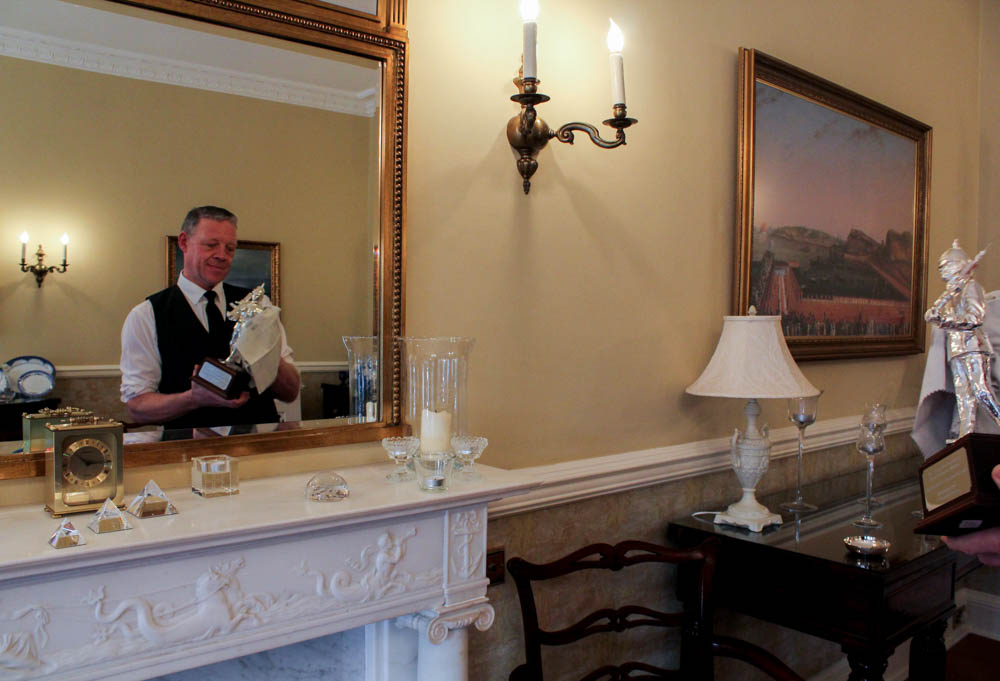
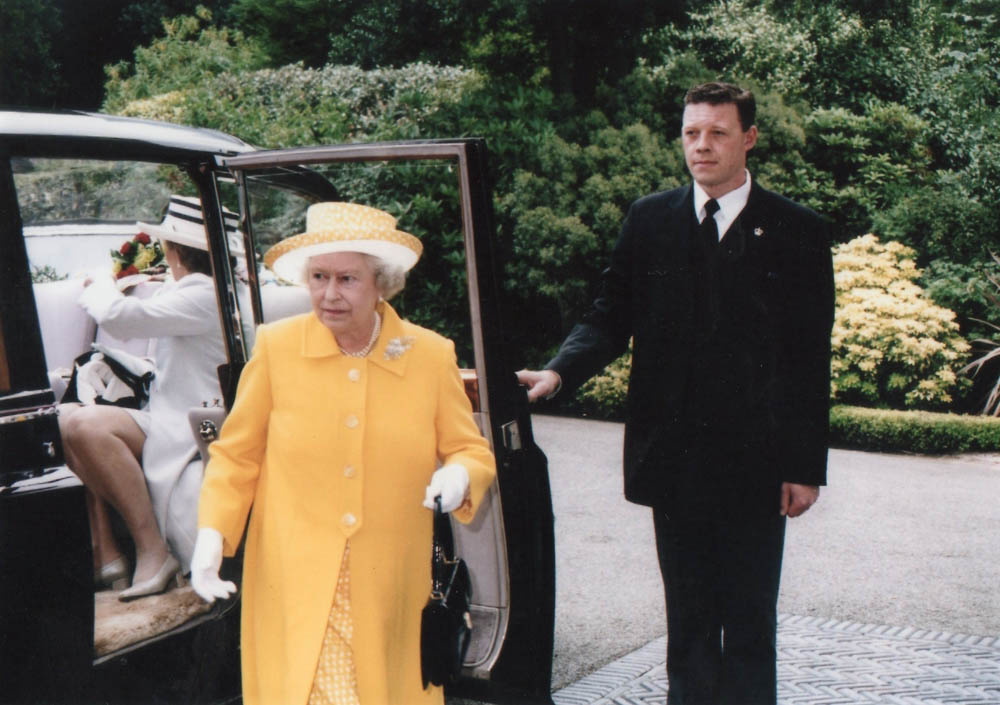
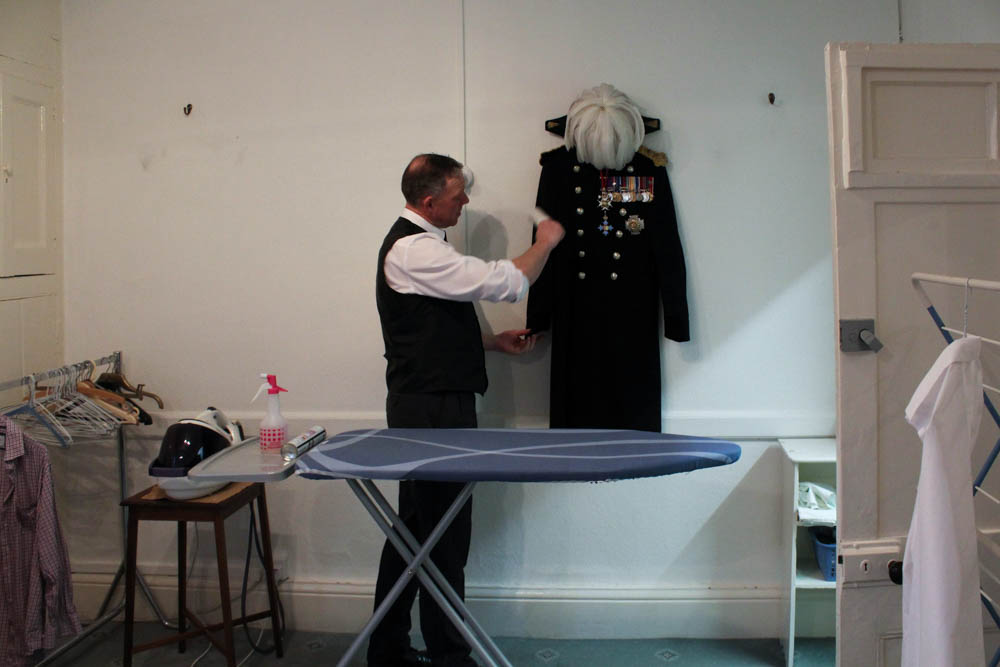
Link to her book: The Butler
Link to her blog
https://hautlieucreative.co.uk/photo16a2/author/scumming05/
Viviana Maia: Destruction is Creation
I created this photographic book called “Creation Is Destruction” as an outlet to show how not everything we see is the truth. As part of our exam project, I decided to focus on the theme of truth to be able to have a chance of telling my own version of events that have occurred throughout my life. The main theme of my photo book is the sense that when you destroy something, you forget that you are always creating something new. I used that notion to therefore allow myself to create a whole new truth about who I am, where I came from and what it all means to me. I decided to use archival images from when I was a child as well as images taken from family photo albums which I then digitalised and this is when I began my destruction process. I ripped up, stitched together, erased people and added people to my photographs to create a new truth and a new sense of reality that, at that time I still had no idea what it was going to be until I left everything I grew up with behind and started a whole new life in a completely different place.

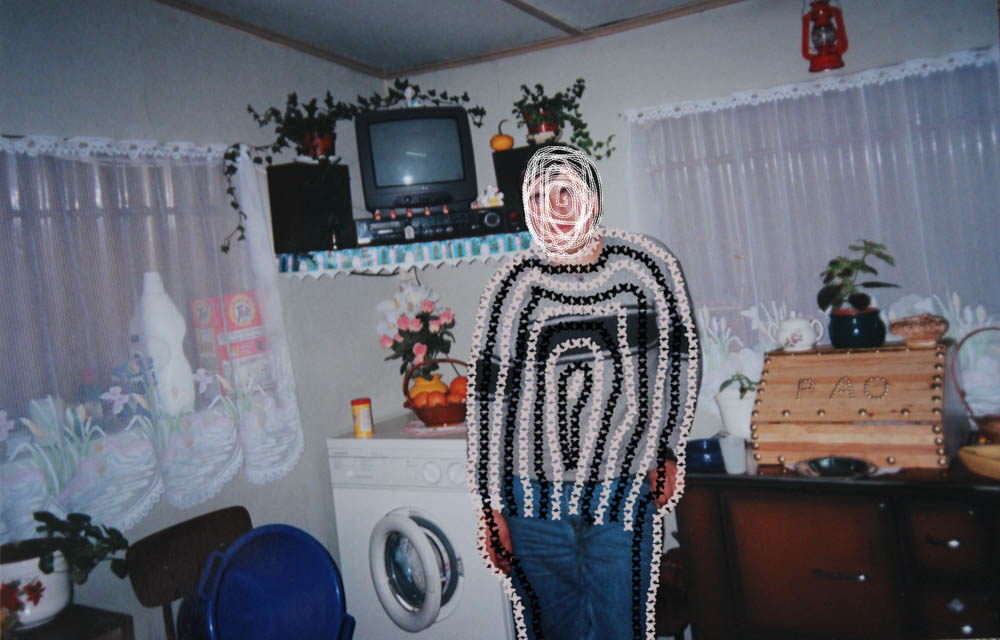
Link to her blog
https://hautlieucreative.co.uk/photo16a2e/author/vmaia05/

Holly Benning: Three Chapters
I have explored how the invisible can be captured and portrayed through the medium of photography. And why memories hold such a powerful influence over our past, present and future. I have looked at what makes a photograph meaningful, what gives a photograph reality and how through photography the memory of a person can live on. My project focused on exploring the invisible through three female generation’s memories; this included my grandmother, my mother and myself. These distinctive viewpoints enabled my project to become more personal and really seek the depths of my grandfather’s life. I think memory is more than simply remembering a once present thought, but it is about connecting with the past in order for it to live on. We are made up of fragmented memories and forgotten dreams. Our entirety rests in the fate of old letters, burnt photographs and meaningless possessions. We never question the invisible, it is as though we are on a relentless pursuit to try and capture what we cannot see. We abide by the rules and limitations that are enforced by the concept of death. But what happens to those who become untouchable, those who are no longer part of the flux. Their existence becomes empty and lost; they are no longer perceptible to the eye. We yearn to cherish the ‘good’ memories and except the restrictions we are faced with, regarding mortality. In doing so, the feeling of life is created; the tangibility of pleasure and pain enters our worlds and consumes us. But, photographs hold heritage and meaning, they have a depth of knowledge and feeling to them.
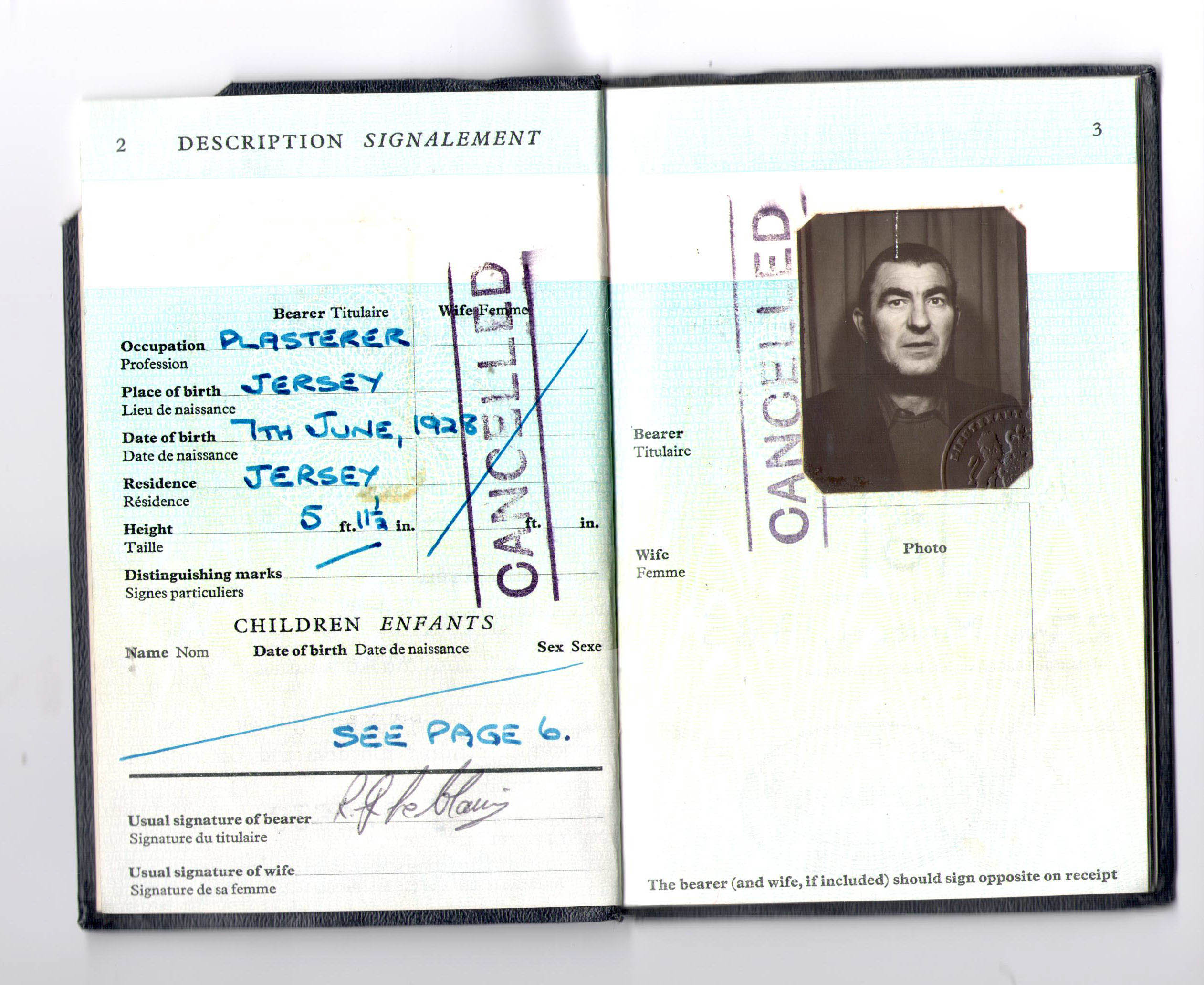
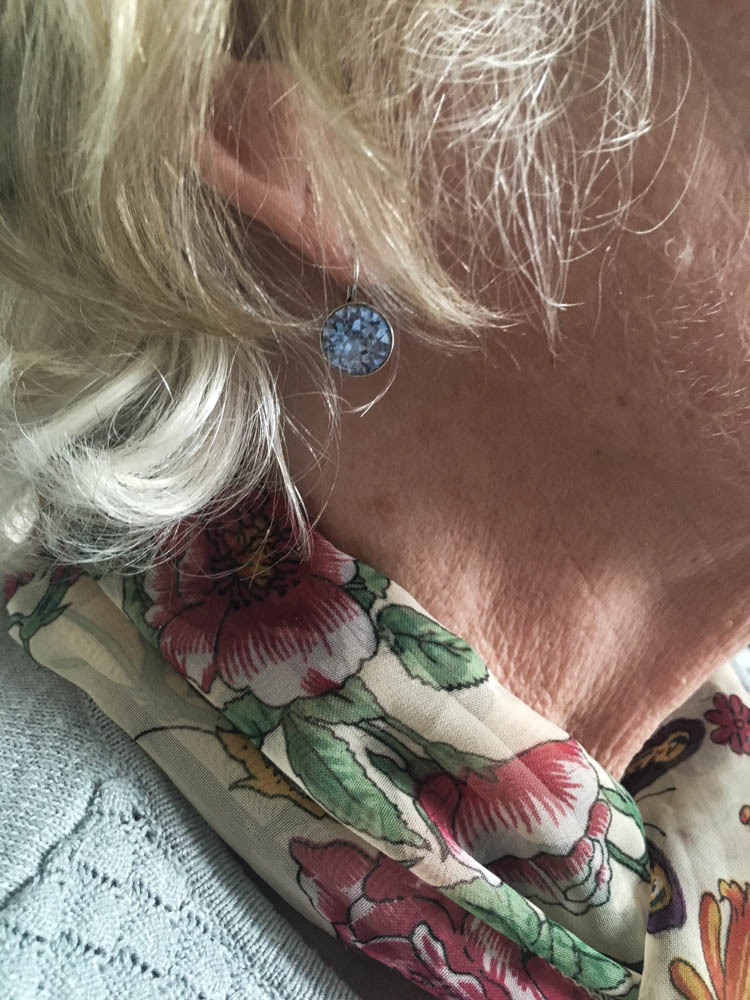
Link to her blog:
https://hautlieucreative.co.uk/photo16a2/author/hbenning05/
Personal Study | 2015-16
Bryony Sanderson: Gie us a wee word wi’ yer Mum:
The title of this work is phrase I would hear both my Scottish Grandparents say almost every time I answered the phone. During this project, I focused on my Scottish Heritage and the difficultly living in Jersey has bought to our relationship with my Grandparents.
Bryony’s exam project: Artificial
Being surrounded and fascinated in the prosthetic world through my parents’ occupation, I felt that this to be an appropriate area to explore under the theme flaws and imperfections. From the moment the idea sprung to mind, I knew this was going to be a challenge, being well aware it would push my abilities as an amateur photographer. However, I was firm in my decision to pursue this, making it my goal to depict the power, strength and determination of amputees, and how in-fact, their ‘imperfection’ or ‘flaw’ as some would call it, is certainly not a flaw at all. Stuart Penn, the focus of my photographs, was such a pleasure to work and a huge inspiration, giving us the powerful message that anything really is possible. I feel honoured to have had the opportunity of taking his photographs and gaining insight into his incredible lifestyle.
Eve Ozouf A Lekker Christmas
For this project I captured the highlights of my family holiday to Durban, South Africa for Christmas 2014. The images were captured in a documentary style, which is my preferred approach as I enjoy capturing family life as well as landscapes where human activity has occurred. The word ‘Lekker’ which I used to describe my Christmas means ‘good’ in the native language of Afrikaans. My photographs show a variety of environments that South Africa has to offer with its vast land including urban built up areas to the deserted African plains. Some images show the ‘Durbanite’ way of life, including where my 14-year-old cousin demonstrates how to use my grandfather’s rifle to shoot the annoyingly noisy ‘Hadeda’ birds. South Africa is full of vibrant colours and textures which I particularly focused on when producing this body of work as a photograph isn’t just about how it looks, it’s how you imagine it feeling. A lot of experimentation was used to bring out different styles of photography including slow shutter speeds to dramatise events such as the bonfire sprites floating towards the sky. For me, these images capture the quality of life South Africa has to offer and should make the viewers want to visit this beautiful country for themselves.
Oliver Sharman You’s Company, Me’s a Crowd is a photo book in an autobiographical form, whereby I am re-enacting events that occurred in my recent life, venturing from visiting my brother at university and the hungover pain this brough, to partying and hanging out with friends in all manner of ways and the aftermath of this. So, here is an insight into me, often eventful life of a teen in the island of Jersey.
Matt Palmer: I Need A Shovel is the story of my Granddad, the house he has lived in since the 1960s and the clearing out of the house as it is now need to be sold. The name of this project came from my Dad. Him and a couple of others when ahead to my Granddad’s house whilst I went with my Aunt to pick my Granddad up. My Dad had the job of removing the upstairs toilet, which, when it stopped working, my Granddad kept on using it until it overflowed. When my Aunt and I arrived the first thing my Dad said to his sister was ‘I Need A Shovel.’ We all found that line funny when we heard it and then that line just stuck with me.
Lots of people can see little bits of themselves when they see my granddad’s hoarding, be it from collecting newspapers, or postcards, or whatever they’ve collected, it can all be related to what my Granddad has done over the past 50 years.
It is a growing problem. The family need to sell the house as the people next door want to buy the house, however, my Granddad doesn’t want anything to go or be moved. I feel that this could be happening to lots of people across not just the UK but the world. This project will speak to lots of families who are facing the same problem.
Matt Palmer: A Little Bit Longer: Not all disabilities are visible. You could know some your whole life and never know that they have a severe, life-long condition. On Tuesday 14th July 2009, I was diagnosed with an invisible illness; Diabetes Mellitus Type 1, a condition when the pancreas in the body loses the ability to produce insulin independently. Day to day, my life hasn’t changed; however, I have to inject myself four times a day, and manually balance my sugar levels for the rest of my life.
As diabetes is something you cannot see, it was very hard to photograph it. I took inspiration from Elinor Carucci, an Israeli-American photographer who photographed herself with her children from when she was pregnant, through the birth to her children growing up. Her work involves very revealing, close-up self-portraits to capture her emotions. I found this style to be inspiring in capturing one’s self, and adopted this style into my own.
This is the first time I have ever turned the camera on myself. You would think it would be hard, however, it was just like I was being a model for someone else, and since I’m very open, talking about my diabetes, I found it easy to show my emotions. Photographing events from having low blood sugar level in the middle of the night, to a regular check-up at the diabetes Centre, to an eye-screening at the hospital, and the different physiological outcomes I had to injure, all within one week.
Tom Rolls: Angel; The Perfect being? With this work, I am exploring Angels in relation to the project brief “Perfection/Imperfection” which I chose as part of my A2 final Photography exam. Throughout the project, my aim was to rekindle an idea of the Angelic being in relation to different people’s perceptions; for faith, protection, happiness, balance etc. I spoke with a number of different people about their definition of an Angel and what it meant to them.
I interviewed my local church vicar who gave me a very brought insight into angels in both a religious and personal sense. I came away bewildered at the fact that Angels are a very important part of people’s lives, and realised that there is a whole other dimension to the subject. Having researched and gained enough primary knowledge, I began transforming these different perceptions into my own interpretations and pieced together a visual binding of all the ways in which an Angel spoke to me through others. I made a film which documents my journey in the sense of exploring what angels actually symbolise today, and how its image and meaning has changed over time. I hope you will also find this a journey for yourself and come away reflecting on this inner dimension from your own personal viewpoint. Are angels in fact the perfect being, or is it in fact their imperfections which make them so sacred?

